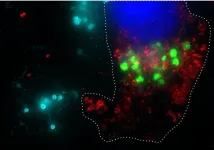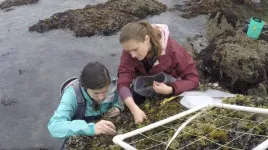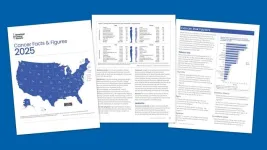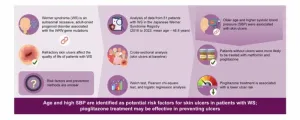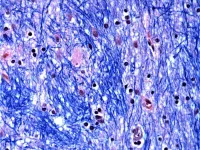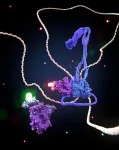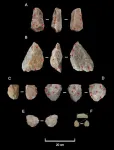(Press-News.org) EMBARGO: THIST CONTENT IS UNDER EMBARGO UNTIL 2 PM U.S. EASTERN STANDARD TIME ON JANUARY 16, 2025. INTERESTED MEDIA MAY RECIVE A PREVIEW COPY OF THE JOURNAL ARTICLE IN ADVANCE OF THAT DATE OR CONDUCT INTERVIEWS, BUT THE INFORMATION MAY NOT BE PUBLISHED, BROADCAST, OR POSTED ONLINE UNTIL AFTER THE RELEASE WINDOW.
Researchers at Colorado State University and their partners have developed an adhesive polymer that is stronger than current commercially available options while also being biodegradable and reusable. The findings – described in Science – show how the common, naturally occurring polymer P3HB can be chemically re-engineered for use as a strong yet sustainable bonding agent.
Adhesives are commonly used in automotives, packaging, electronics, solar cells and construction, among many other areas. Together they make up a roughly $50 billion industry that supports much of our modern life but also contributes to the mounting issue of plastic waste. The paper describes the team’s work using experimental, simulation and process modeling to develop a replacement polymer.
The project was led by University Distinguished Professor Eugene Chen in the Department of Chemistry. Other partners on the paper include Gregg Beckham at the National Renewable Energy Laboratory and Professor Ting Xu at the University of California, Berkley and researchers from their groups.
Chen said that poly(3-hydroxybutyrate), or P3HB, is a natural, biobased and biodegradable polymer that can be produced by microbes under the right biological conditions. While the polymer is not adhesive when made that way, his lab was able to chemically re-engineer its structure to now deliver stronger adhesion than the common petroleum-derived, nonbiodegradable options when used on various substrates or surfaces such as aluminum, glass and wood. The adhesion strength of the re-engineered P3HB can also be tuned to accommodate different application needs.
The findings are part of a larger goal by Chen’s group to improve and expand our ability to tackle the global plastics pollution crisis. His team is involved in many efforts to develop chemically recyclable, biodegradable and, overall, more sustainable alternatives to today’s plastic materials. He said that while many people inherently recognize the life cycle issues that come with a disposable water bottle, adhesives present more daunting issues with fewer potential solutions.
“Petroleum-based thermoset adhesives such as Gorilla Glue and J-B Weld, along with thermoplastic hot melts, can be very difficult or even impossible to recycle or recover – primarily because of their strong bonds to other materials,” he said. “Our approach instead offers a biodegradable material that can be used in a variety of industries with tunable or even higher strength compared to those options.”
Ethan Quinn is a Ph.D. student at CSU and served as a co-lead author on the paper with postdoctoral researcher Zhen Zhang. Quinn said he and Zhang led work around the creation and testing of the material.
“We developed a sample P3HB glue stick and were able to use it with a commercially available glue gun to test its application in sealing cardboard boxes and other properties on steel plates,” Quinn said. “I knew the data supported it being stronger than other options, but I was shocked that we were able to show that it far out-performs typical hot-melt options – holding up to 20 pounds in place compared to the 15 pounds an existing adhesive could not manage.”
Chen said P3HB is biodegradable under a variety of instances, including managed and unmanaged environments. That means it will biodegrade naturally in landfills just as well as salty ocean water or soils, for example. That expands the range of possible options for dealing with the material at the end of its life cycle. The P3HB adhesive can also be recovered, reprocessed and reused.
The CSU team will now start work on ways to commercialize the polymer for broad use.
“We are working on two different approaches aiming for mass production, including ways to lower the overall cost and environmental impacts,” Chen said. “The analysis performed by the NREL team has identified key areas where we could make improvements, and we will continue to work with the BOTTLE Consortium on those scaling efforts.”
The work done at CSU and NREL was supported by the Department of Energy’s BOTTLE Consortium.
END
Polymer research shows potential replacement for common superglues with a reusable and biodegradable alternative
Researchers have developed an adhesive polymer that is stronger than current commercially available options while also being biodegradable, tunable, and reusable
2025-01-16
ELSE PRESS RELEASES FROM THIS DATE:
Research team receives $1.5 million to study neurological disorders linked to long COVID
2025-01-16
The National Institute of Mental Health has awarded a significant grant of $1.5 million to Jianyang Du, PhD, of the University of Tennessee Health Science Center, for a research study aimed at uncovering the cellular and molecular mechanisms that lead to neurological disorders caused by long COVID-19.
Dr. Du is an associate professor at the College of Medicine in the Department of Anatomy and Neurobiology. Colleen Jonsson, PhD, director of the UT Health Science Center Regional Biocontainment Laboratory and professor in the Department of Microbiology, is co-investigator on the grant, and Kun Li, PhD, assistant ...
Research using non-toxic bacteria to fight high-mortality cancers prepares for clinical trials
2025-01-16
A University of Massachusetts Amherst-Ernest Pharmaceuticals team of scientists has made “exciting,” patient-friendly advances in developing a non-toxic bacterial therapy, BacID, to deliver cancer-fighting drugs directly into tumors. This emerging technology holds promise for very safe and more effective treatment of cancers with high mortality rates, including liver, ovarian and metastatic breast cancer.
Clinical trials with participating cancer patients are estimated to begin in 2027. “This is exciting because we now have all the critical pieces for getting an effective bacterial ...
Do parents really have a favorite child? Here’s what new research says
2025-01-16
Siblings share a unique bond built from shared memories, family rituals and the occasional argument. But ask almost anyone with a brother or sister and you’ll likely find a longstanding debate: who’s the favorite? New research from BYU sheds some light on that playful rivalry, revealing how parents might subtly show favoritism based on birth order, personality and gender.
The study, conducted by BYU School of Family Life professor Alex Jensen, found that younger siblings generally receive more favorable ...
Mussel bed surveyed before World War II still thriving
2025-01-16
A mussel bed along Northern California’s Dillon Beach is as healthy and biodiverse as it was about 80 years ago, when two young students surveyed it shortly before Pearl Harbor was attacked and one was sent to fight in World War II.
Their unpublished, typewritten manuscript sat in the UC Davis Bodega Marine Laboratory’s library for years until UC Davis scientists found it and decided to resurvey the exact same mussel bed with the old paper’s meticulous photos and maps directing their way.
The new findings, published in the journal Scientific Reports, document ...
ACS Annual Report: Cancer mortality continues to drop despite rising incidence in women; rates of new diagnoses under 65 higher in women than men
2025-01-16
ATLANTA, January 16, 2025 — The American Cancer Society (ACS) today released Cancer Statistics, 2025, the organization’s annual report on cancer facts and trends. The new findings show the cancer mortality rate declined by 34% from 1991 to 2022 in the United States, averting approximately 4.5 million deaths. However, this steady progress is jeopardized by increasing incidence for many cancer types, especially among women and younger adults, shifting the burden of disease. For example, incidence rates in women 50-64 years of age have surpassed those in ...
Fewer skin ulcers in Werner syndrome patients treated with pioglitazone
2025-01-16
“[…] the results of this study indicate that pioglitazone might be useful in treating refractory skin ulcers, a typical condition that reduces the quality of life of patients with WS.”
BUFFALO, NY- January 16, 2025 – A new research paper was published in Aging (listed by MEDLINE/PubMed as “Aging (Albany NY)” and “Aging-US” by Web of Science) Volume 16, Issue 22 on December 2, 2024, entitled “Less frequent skin ulcers among patients with Werner syndrome treated with pioglitazone: findings from the Japanese Werner Syndrome Registry.”
Scientists ...
Study finds surprising way that genetic mutation causes Huntington’s disease, transforming understanding of the disorder
2025-01-16
Scientists at the Broad Institute of MIT and Harvard, Harvard Medical School, and McLean Hospital have discovered a surprising mechanism by which the inherited genetic mutation known to cause Huntington’s disease leads to the death of brain cells. The findings change the understanding of the fatal neurodegenerative disorder and suggest potential ways to delay or even prevent it.
For 30 years, researchers have known that Huntington’s is caused by an inherited mutation in the Huntingtin (HTT) gene, but they didn’t ...
DNA motors found to switch gears
2025-01-16
Scientists from Delft, Vienna, and Lausanne discovered that the protein machines that shape our DNA can switch direction. Until now, researchers believed that these so-called SMC motors that make loops into DNA could move in one direction only. The discovery, which is published in Cell, is key to understanding how these motors shape our genome and regulate our genes.
Connecting DNA
“Sometimes, a cell needs to be quick in changing which genes should be expressed and which ones should be turned off, for example in response to food, alcohol or heat. To turn genes off and on, cells use Structural Maintenance ...
Human ancestor thrived longer in harsher conditions than previous estimates
2025-01-16
An early human ancestor of our species successfully navigated harsher and more arid terrains for longer in Eastern Africa than previously thought, according to a new study published in Nature Communications Earth & Environment.
Homo erectus, the first of our relatives to have human-like proportions and the first known early human to migrate out of Africa, was the focus of the new study led by the international research team.
The researchers analysed evidence from Engaji Nanyori in Tanzania’s Oldupai Gorge, revealing Homo erectus thrived ...
Evolution: Early humans adapted to extreme desert conditions over one million years ago
2025-01-16
Homo erectus was able to adapt to and survive in desert-like environments at least 1.2 million years ago, according to a paper published in Communications Earth & Environment. The findings suggest that behavioural adaptations included returning repeatedly over thousands of years to specific rivers and ponds for fresh water, and the development of specialised tools. The authors propose that this capability to adapt may have led to the expansion of H. erectus’ geographic range.
There has been significant debate over ...
LAST 30 PRESS RELEASES:
Making lighter work of calculating fluid and heat flow
Normalizing blood sugar can halve heart attack risk
Lowering blood sugar cuts heart attack risk in people with prediabetes
Study links genetic variants to risk of blinding eye disease in premature infants
Non-opioid ‘pain sponge’ therapy halts cartilage degeneration and relieves chronic pain
AI can pick up cultural values by mimicking how kids learn
China’s ecological redlines offer fast track to 30 x 30 global conservation goal
Invisible indoor threats: emerging household contaminants and their growing risks to human health
Adding antibody treatment to chemo boosts outcomes for children with rare cancer
Germline pathogenic variants among women without a history of breast cancer
Tanning beds triple melanoma risk, potentially causing broad DNA damage
Unique bond identified as key to viral infection speed
Indoor tanning makes youthful skin much older on a genetic level
Mouse model sheds new light on the causes and potential solutions to human GI problems linked to muscular dystrophy
The Journal of Nuclear Medicine ahead-of-print tip sheet: December 12, 2025
Smarter tools for peering into the microscopic world
Applications open for funding to conduct research in the Kinsey Institute archives
Global measure underestimates the severity of food insecurity
Child survivors of critical illness are missing out on timely follow up care
Risk-based vs annual breast cancer screening / the WISDOM randomized clinical trial
University of Toronto launches Electric Vehicle Innovation Ontario to accelerate advanced EV technologies and build Canada’s innovation advantage
Early relapse predicts poor outcomes in aggressive blood cancer
American College of Lifestyle Medicine applauds two CMS models aligned with lifestyle medicine practice and reimbursement
Clinical trial finds cannabis use not a barrier to quitting nicotine vaping
Supplemental nutrition assistance program policies and food insecurity
Switching immune cells to “night mode” could limit damage after a heart attack, study suggests
URI-based Global RIghts Project report spotlights continued troubling trends in worldwide inhumane treatment
Neutrophils are less aggressive at night, explaining why nighttime heart attacks cause less damage than daytime events
Menopausal hormone therapy may not pose breast cancer risk for women with BRCA mutations
Mobile health tool may improve quality of life for adolescent and young adult breast cancer survivors
[Press-News.org] Polymer research shows potential replacement for common superglues with a reusable and biodegradable alternativeResearchers have developed an adhesive polymer that is stronger than current commercially available options while also being biodegradable, tunable, and reusable




